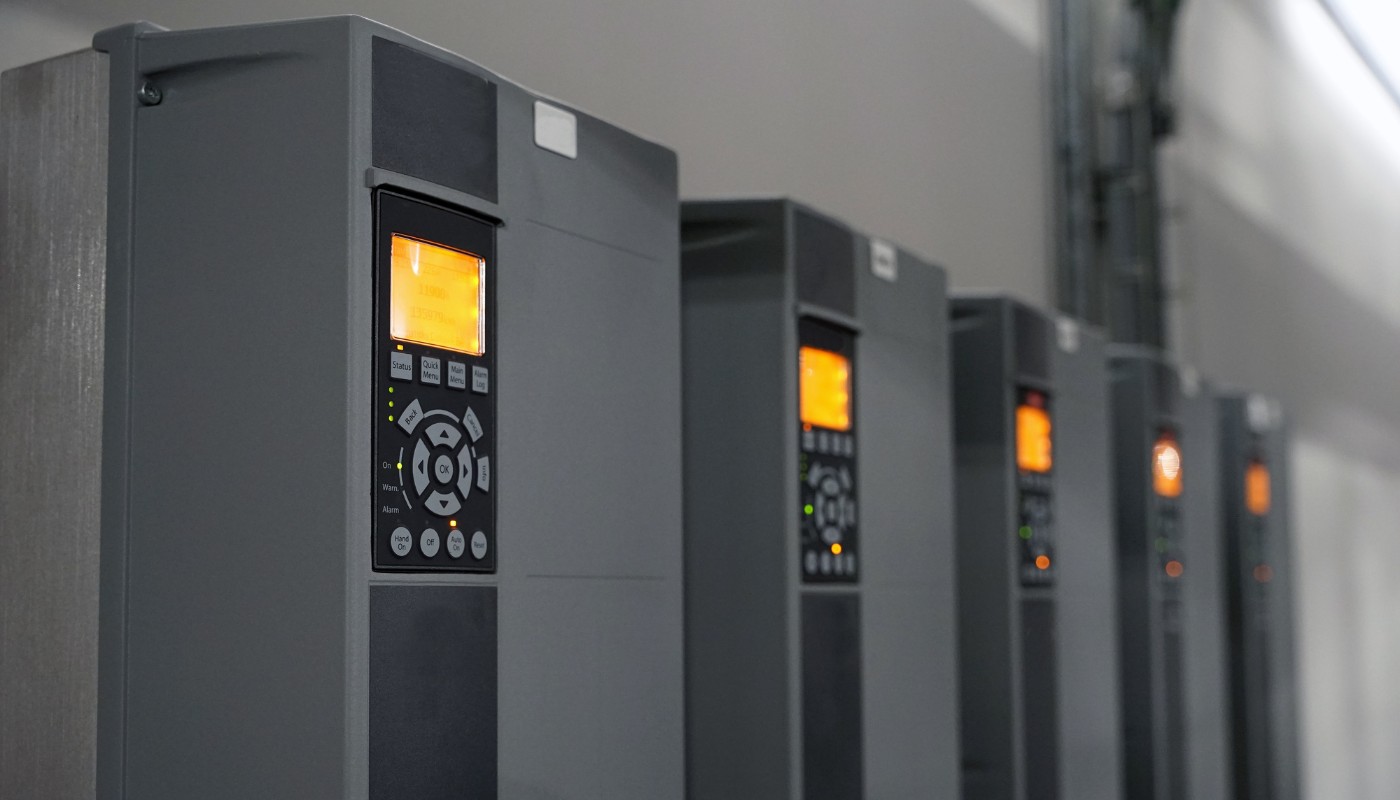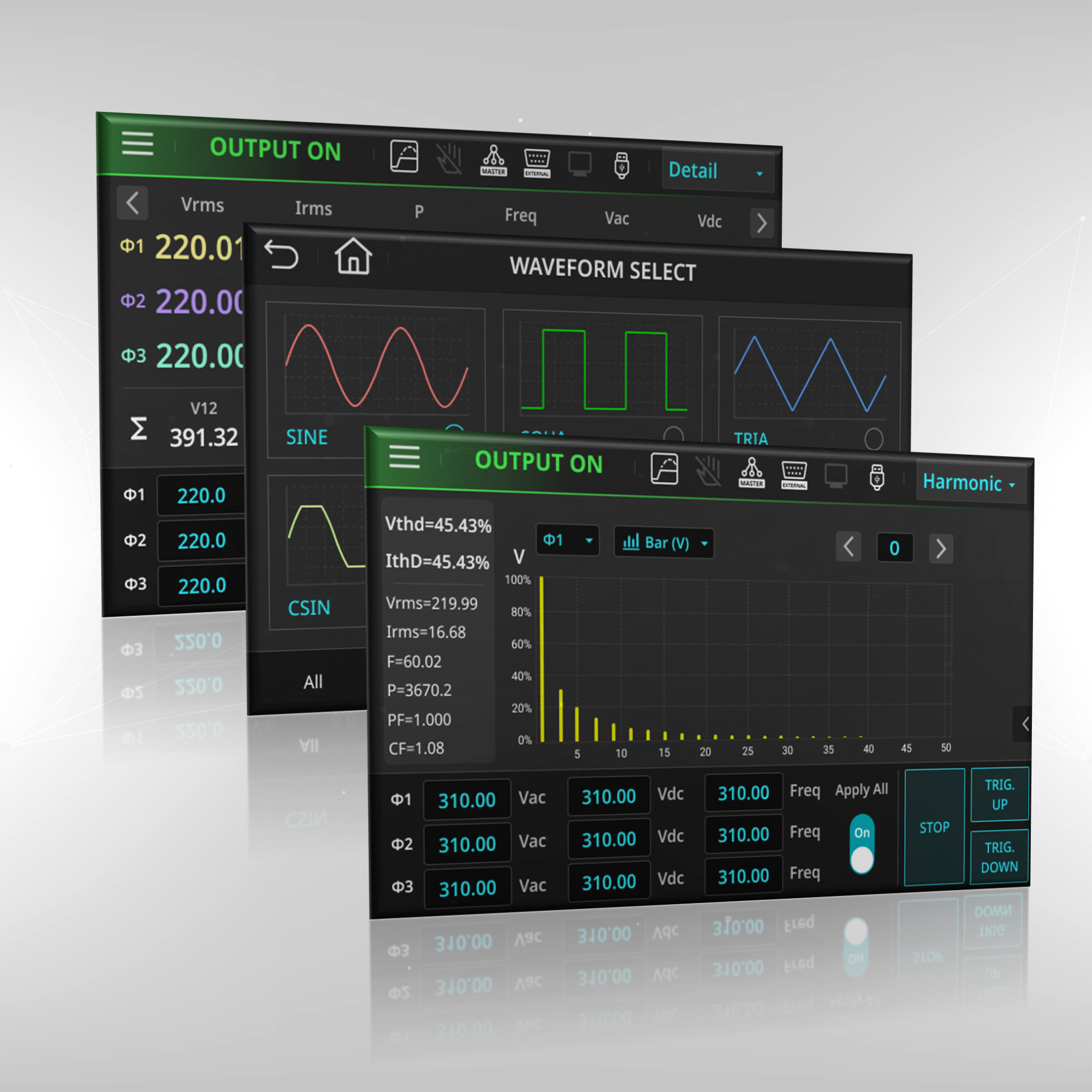Programmable impedance in an AC source refers to the ability to adjust the output impedance—the opposition to current flow—in an alternating current circuit. This feature is crucial for power testing equipment because it allows engineers and technicians to simulate various electrical environments and test device performance under diverse load conditions. As power grids around the world differ in their impedance characteristics, programmable impedance becomes an invaluable tool in replicating real-world scenarios for product validation and compliance testing.
In today’s rapidly evolving market, where renewable energy, smart grids, and advanced power electronics are gaining traction, having the capability to modify AC source impedance in real time is no longer a luxury—it is essential. Providers like Infinipower, a leading power testing equipment manufacturer in Taiwan, are at the forefront of this technology.
Why Programmable Impedance Matters
Simulating Real-World Power Grids
Power grids differ significantly from one region to another. These differences arise due to variations in infrastructure, load distribution, and local generation sources. An AC source with programmable impedance enables engineers to mimic the impedance of various power grids, thereby simulating conditions that devices will encounter in the field. For instance, testing an inverter’s performance under simulated grid conditions—matching standards like IEC61000—ensures that the device can seamlessly integrate into diverse markets.
Enhancing Electromagnetic Compatibility (EMC) Testing
Electromagnetic compatibility is a critical parameter for electronic devices. Controlling impedance precisely allows for better simulation of the noise, harmonics, and interference present in a real-world grid. This, in turn, is essential for EMC testing to ensure that devices meet regulatory standards, such as IEC61000-3-2. By using programmable impedance, engineers can evaluate how devices behave under different electromagnetic conditions and design robust solutions that mitigate interference.
Improving Load Regulation Testing
For power electronics—such as converters, inverters, and rectifiers—load regulation is a key performance indicator. By adjusting the impedance, testers can mimic conditions like voltage dips, swells, or weak grids. This is particularly useful for critical applications in data centers, renewable energy installations, and industrial automation, where power quality directly impacts system efficiency and reliability.
Testing Device Stability
Devices must reliably perform under varying impedance conditions. Programmable impedance allows for testing how a device responds to sudden changes in load. This is vital for applications in sensitive sectors like medical equipment and telecommunications, where stability is paramount. By stress testing devices with different impedance settings, manufacturers can ensure their products remain stable even under adverse conditions.
Understanding Programmable Impedance
What Is Impedance in AC Circuits?
In AC circuits, impedance (measured in ohms, Ω) represents the overall resistance to the flow of current. Unlike DC resistance, impedance accounts for both resistive and reactive (inductive and capacitive) components. It is frequency-dependent, meaning that as the frequency of the AC signal changes, the impedance will vary. This dynamic behavior makes impedance a crucial parameter for AC applications, especially when simulating realistic power conditions.
The Concept of Programmable Impedance
Programmable impedance refers to an AC source’s capability to adjust its output impedance over a range of values. This is achieved through advanced control systems—often integrated within DC/AC inverter stages—that dynamically alter the voltage and current relationship. By doing so, the power source can simulate different impedance conditions, from low impedance (ensuring stable voltage under heavy load) to high impedance (mimicking a weak power grid).
For example, when testing a solar inverter, a low output impedance might be used to ensure a stable voltage supply. Conversely, to replicate conditions in a rural power grid with higher impedance, the AC source can be adjusted accordingly. This flexibility is essential for ensuring devices are tested under conditions that closely resemble their operating environments.
The Importance of Programmable Impedance
Key Benefits for Device Testing
Simulating Diverse Power Grids
As mentioned earlier, power grids vary globally. Programmable impedance enables engineers to simulate these variations—allowing devices to be tested against multiple grid profiles. This is critical for products that are intended for international markets, ensuring compliance and performance across regions.
Ensuring Device Stability and Reliability
Devices must operate reliably even when the source impedance changes. Testing with programmable impedance provides insight into how a device’s performance might degrade or improve under different conditions, thereby informing design improvements and robustness.
Facilitating EMC and Power Quality Testing
By precisely controlling the impedance, engineers can induce various electromagnetic interference (EMI) conditions and power quality issues. This is fundamental for testing devices against standards like IEC61000, which require rigorous evaluations of noise levels and harmonic distortions.
Enabling Comprehensive Load Regulation Testing
Load regulation testing is enhanced through programmable impedance by allowing simulation of voltage dips, swells, and transient conditions. This is particularly important in high-performance applications where the device’s ability to maintain stable operation directly influences overall system efficiency.
Why Programmable Impedance Is Essential for Infinipower
Companies like Infinipower, based in Taiwan, are renowned for their cutting-edge power testing equipment. With a strong focus on meeting the diverse needs of industries—from automotive and aerospace to telecommunications—programmable impedance is a key feature that sets their products apart. By enabling comprehensive testing across a range of impedance values, Infinipower’s equipment ensures that devices not only meet regulatory standards but also perform reliably in the field.
For more details about advanced power testing solutions, visit Infinipower Technologies
Applications and Benefits Across Industries
Programmable impedance AC sources have a wide range of applications. Below are some key industries and examples of how this technology benefits them:

Power Electronics
Testing devices like inverters, converters, and rectifiers under various grid conditions ensures efficient operation and durability. For example, solar inverters need to be tested with simulated grid impedances to verify their grid-tied performance. This ensures that the devices can handle fluctuations in real-world conditions.
Automotive
With the rapid growth of electric vehicles (EVs), EV charging systems are increasingly important. These systems must operate reliably under a range of grid conditions. Programmable impedance allows for rigorous testing of EV chargers, ensuring they function properly even when connected to grids with varying impedance levels.
Aerospace and Defense
Aerospace and defense applications demand high reliability under extreme conditions. Simulating different power environments using programmable impedance helps in evaluating how aircraft systems and military equipment will perform during operation. This rigorous testing enhances safety and ensures operational readiness in critical applications.
Telecommunications
Base stations and communication equipment rely on stable power supplies. Testing these devices with programmable impedance helps verify their ability to maintain performance under different grid conditions, which is particularly important in remote or variable power environments.
Manufacturing and Production Lines
Before products are shipped, they must meet stringent power-related standards. Programmable impedance allows for comprehensive testing, ensuring that devices can handle a variety of load conditions and comply with international standards. This is crucial for quality assurance and regulatory compliance, particularly for companies like Infinipower serving global markets.
Technical Implementation and Considerations
How Is Programmable Impedance Achieved?
Implementing programmable impedance involves advanced control mechanisms within the AC source. Typically, this is done via:
- Feedback Loops: Modern power sources use feedback mechanisms in their DC/AC inverter stages to dynamically adjust the output impedance.
- Digital Control Systems: Microcontrollers or digital signal processors (DSPs) are used to set and regulate the desired impedance level.
- Compensation Techniques: Advanced algorithms allow for compensation of losses—such as those in transformers—or simulation of “soft” power lines. For example, some systems offer a compensation range of ±10% of the output voltage.
Considerations for High-Frequency Applications
At high frequencies, impedance control becomes more complex due to additional reactive elements in the circuit. Users must be aware of the range and accuracy limitations of their equipment. Incorrect settings could lead to inaccurate test results, underscoring the importance of robust design and user-friendly interfaces.
User Interface and Control
For programmable impedance to be effective, the interface must allow easy adjustment and precise control. Manufacturers often provide software tools and detailed documentation to help users set the impedance accurately and interpret the results correctly.

Comparative Analysis: Fixed vs. Programmable Impedance
To better illustrate the advantages of programmable impedance, consider the following comparison:
| Feature | Fixed Impedance AC Source | Programmable Impedance AC Source |
|---|---|---|
| Flexibility | Limited to one impedance value | Adjustable to multiple values |
| Testing Scenarios | Suitable for standard conditions | Ideal for varied, real-world tests |
| Cost | Generally lower | Higher, reflecting advanced features |
| Applications | Basic testing, fixed environments | Advanced testing, diverse conditions |
| User Control | Minimal, preset only | High, user-defined settings |
This comparison demonstrates that while fixed impedance sources may suffice for simple or routine testing, programmable impedance is essential for comprehensive, realistic, and advanced testing scenarios.
Industry Trends and Future Outlook
Growing Demand in a Changing Market
As of March 2025, the demand for programmable impedance AC sources continues to rise. The expansion of renewable energy systems, increased EV infrastructure, and the development of smart grids are major drivers behind this growth. In regions like Taiwan—an important hub for electronics manufacturing—companies such as Infinipower are well-positioned to lead this market.
Integration with IoT and AI
The future of power testing equipment lies in the integration of Internet of Things (IoT) and Artificial Intelligence (AI) technologies. These innovations will allow for real-time monitoring and automated adjustment of impedance settings based on live data, further enhancing testing precision and efficiency.
Enhancements in User Interface and Data Analytics
As programmable impedance becomes more sophisticated, manufacturers are investing in improved user interfaces and data analytics tools. These enhancements will help users quickly interpret test results and make informed decisions about device performance and compliance.
Conclusion
Programmable impedance in AC sources represents a transformative feature for power testing equipment. By offering the flexibility to simulate diverse electrical environments, it plays a pivotal role in ensuring device stability, compliance with electromagnetic standards, and overall reliability across various industries. Whether testing power electronics, automotive charging systems, aerospace components, or telecommunications equipment, the ability to adjust impedance provides invaluable insights into real-world performance.
For companies like Infinipower, emphasizing programmable impedance is a strategic advantage. It not only caters to the rigorous demands of global markets but also supports ongoing innovation in power testing solutions. By understanding and leveraging programmable impedance, manufacturers can deliver high-quality, compliant, and reliable products that meet the evolving challenges of modern power grids.
Explore additional insights and product information on their blog and check out their RPS-5000 series.
Comparative Summary Table
| Feature | Fixed Impedance AC Source | Programmable Impedance AC Source |
|---|---|---|
| Flexibility | Single, preset impedance value | Adjustable to multiple impedance values |
| Testing Scenarios | Limited to standard conditions | Ideal for simulating diverse, real-world conditions |
| Cost | Lower cost | Higher cost, due to advanced control features |
| Applications | Basic testing | Comprehensive, advanced testing across multiple industries |
| User Control | Minimal control | High degree of user-defined settings |
References
- Pacific Power Source. (n.d.). Programmable AC Sources. Retrieved from Pacific Power Source
- Newtons4th. (n.d.). AC+DC Programmable Power Sources. Retrieved from Newtons4th
- Electronics Tutorials. (n.d.). AC Resistance. Retrieved from Electronics Tutorials
- In Compliance Magazine. (n.d.). Selecting Programmable AC Power Sources. Retrieved from In Compliance Magazine
Note: Additional references and industry articles provide further insights into the benefits and technical aspects of programmable impedance in AC sources.








